您好,登錄后才能下訂單哦!
您好,登錄后才能下訂單哦!
小編這次要給大家分享的是Android如何實現簡單音樂播放器,文章內容豐富,感興趣的小伙伴可以來了解一下,希望大家閱讀完這篇文章之后能夠有所收獲。
開發工具:Andorid Studio 1.3
運行環境:Android 4.4 KitKat
工程內容
實現一個簡單的音樂播放器,要求功能有:
代碼實現
導入歌曲到手機SD卡的Music目錄中,這里我導入了4首歌曲:仙劍六里面的《誓言成暉》、《劍客不能說》、《鏡中人》和《浪花》,也推薦大家聽喔(捂臉
然后新建一個類MusicService繼承Service,在類中定義一個MyBinder,有一個方法用于返回MusicService本身,在重載onBind()方法的時候返回
public class MusicService extends Service {
public final IBinder binder = new MyBinder();
public class MyBinder extends Binder{
MusicService getService() {
return MusicService.this;
}
}
@Override
public IBinder onBind(Intent intent) {
return binder;
}
}在MusicService中,聲明一個MediaPlayer變量,進行設置歌曲路徑,這里我選擇歌曲1作為初始化時候的歌曲
private String[] musicDir = new String[]{
Environment.getExternalStorageDirectory().getAbsolutePath() + "/Music/仙劍奇俠傳六-主題曲-《誓言成暉》.mp3",
Environment.getExternalStorageDirectory().getAbsolutePath() + "/Music/仙劍奇俠傳六-主題曲-《劍客不能說》.mp3",
Environment.getExternalStorageDirectory().getAbsolutePath() + "/Music/仙劍奇俠傳六-主題曲-《鏡中人》.mp3",
Environment.getExternalStorageDirectory().getAbsolutePath() + "/Music/仙劍奇俠傳六-主題曲-《浪花》.mp3"};
private int musicIndex = 1;
public static MediaPlayer mp = new MediaPlayer();
public MusicService() {
try {
musicIndex = 1;
mp.setDataSource(musicDir[musicIndex]);
mp.prepare();
} catch (Exception e) {
Log.d("hint","can't get to the song");
e.printStackTrace();
}
}設計一些歌曲播放、暫停、停止、退出相應的邏輯,此外我還設計了上一首和下一首的邏輯
public void playOrPause() {
if(mp.isPlaying()){
mp.pause();
} else {
mp.start();
}
}
public void stop() {
if(mp != null) {
mp.stop();
try {
mp.prepare();
mp.seekTo(0);
} catch (Exception e) {
e.printStackTrace();
}
}
}
public void nextMusic() {
if(mp != null && musicIndex < 3) {
mp.stop();
try {
mp.reset();
mp.setDataSource(musicDir[musicIndex+1]);
musicIndex++;
mp.prepare();
mp.seekTo(0);
mp.start();
} catch (Exception e) {
Log.d("hint", "can't jump next music");
e.printStackTrace();
}
}
}
public void preMusic() {
if(mp != null && musicIndex > 0) {
mp.stop();
try {
mp.reset();
mp.setDataSource(musicDir[musicIndex-1]);
musicIndex--;
mp.prepare();
mp.seekTo(0);
mp.start();
} catch (Exception e) {
Log.d("hint", "can't jump pre music");
e.printStackTrace();
}
}
}注冊MusicService并賦予權限,允許讀取外部存儲空間
<uses-permission android:name="android.permission.WRITE_EXTERNAL_STORAGE"/> <uses-permission android:name="android.permission.READ_EXTERNAL_STORAGE"/> <service android:name="com.wsine.west.exp5_AfterClass.MusicService" android:exported="true"></service>
在MainAcitvity中聲明ServiceConnection,調用bindService保持與MusicService通信,通過intent的事件進行通信,在onCreate()函數中綁定Service
private ServiceConnection sc = new ServiceConnection() {
@Override
public void onServiceConnected(ComponentName componentName, IBinder iBinder) {
musicService = ((MusicService.MyBinder)iBinder).getService();
}
@Override
public void onServiceDisconnected(ComponentName componentName) {
musicService = null;
}
};
private void bindServiceConnection() {
Intent intent = new Intent(MainActivity.this, MusicService.class);
startService(intent);
bindService(intent, sc, this.BIND_AUTO_CREATE);
}
@Override
protected void onCreate(Bundle savedInstanceState) {
super.onCreate(savedInstanceState);
setContentView(R.layout.activity_main);
Log.d("hint", "ready to new MusicService");
musicService = new MusicService();
Log.d("hint", "finish to new MusicService");
bindServiceConnection();
seekBar = (SeekBar)this.findViewById(R.id.MusicSeekBar);
seekBar.setProgress(musicService.mp.getCurrentPosition());
seekBar.setMax(musicService.mp.getDuration());
musicStatus = (TextView)this.findViewById(R.id.MusicStatus);
musicTime = (TextView)this.findViewById(R.id.MusicTime);
btnPlayOrPause = (Button)this.findViewById(R.id.BtnPlayorPause);
Log.d("hint", Environment.getExternalStorageDirectory().getAbsolutePath()+"/You.mp3");
}bindService函數回調onSerciceConnented函數,通過MusiceService函數下的onBind()方法獲得binder對象并實現綁定
通過Handle實時更新UI,這里主要使用了post方法并在Runnable中調用postDelay方法實現實時更新UI,Handle.post方法在onResume()中調用,使得程序剛開始時和重新進入應用時能夠更新UI
在Runnable中更新SeekBar的狀態,并設置SeekBar滑動條的響應函數,使歌曲跳動到指定位置
public android.os.Handler handler = new android.os.Handler();
public Runnable runnable = new Runnable() {
@Override
public void run() {
if(musicService.mp.isPlaying()) {
musicStatus.setText(getResources().getString(R.string.playing));
btnPlayOrPause.setText(getResources().getString(R.string.pause).toUpperCase());
} else {
musicStatus.setText(getResources().getString(R.string.pause));
btnPlayOrPause.setText(getResources().getString(R.string.play).toUpperCase());
}
musicTime.setText(time.format(musicService.mp.getCurrentPosition()) + "/"
+ time.format(musicService.mp.getDuration()));
seekBar.setProgress(musicService.mp.getCurrentPosition());
seekBar.setOnSeekBarChangeListener(new SeekBar.OnSeekBarChangeListener() {
@Override
public void onProgressChanged(SeekBar seekBar, int progress, boolean fromUser) {
if (fromUser) {
musicService.mp.seekTo(seekBar.getProgress());
}
}
@Override
public void onStartTrackingTouch(SeekBar seekBar) {
}
@Override
public void onStopTrackingTouch(SeekBar seekBar) {
}
});
handler.postDelayed(runnable, 100);
}
};
@Override
protected void onResume() {
if(musicService.mp.isPlaying()) {
musicStatus.setText(getResources().getString(R.string.playing));
} else {
musicStatus.setText(getResources().getString(R.string.pause));
}
seekBar.setProgress(musicService.mp.getCurrentPosition());
seekBar.setMax(musicService.mp.getDuration());
handler.post(runnable);
super.onResume();
Log.d("hint", "handler post runnable");
}給每個按鈕設置響應函數,在onDestroy()中添加解除綁定,避免內存泄漏
public void onClick(View view) {
switch (view.getId()) {
case R.id.BtnPlayorPause:
musicService.playOrPause();
break;
case R.id.BtnStop:
musicService.stop();
seekBar.setProgress(0);
break;
case R.id.BtnQuit:
handler.removeCallbacks(runnable);
unbindService(sc);
try {
System.exit(0);
} catch (Exception e) {
e.printStackTrace();
}
break;
case R.id.btnPre:
musicService.preMusic();
break;
case R.id.btnNext:
musicService.nextMusic();
break;
default:
break;
}
}
@Override
public void onDestroy() {
unbindService(sc);
super.onDestroy();
}在Button中賦予onClick屬性指向接口函數
<Button android:layout_width="wrap_content" android:layout_height="wrap_content" android:id="@+id/BtnPlayorPause" android:text="@string/btnPlayorPause" android:onClick="onClick"/>
效果圖
打開界面->播放一會兒進度條實時變化->拖動進度條->點擊暫停->點擊Stop->點擊下一首(歌曲時間變化)->點擊上一首->點擊退出
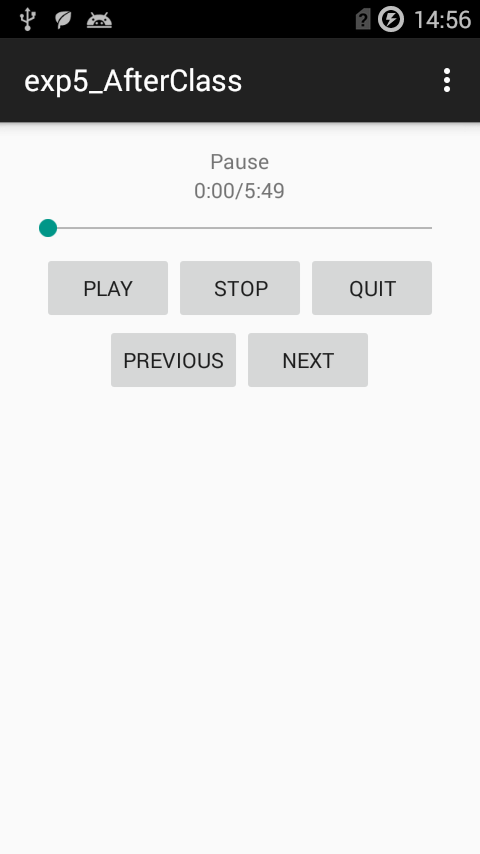
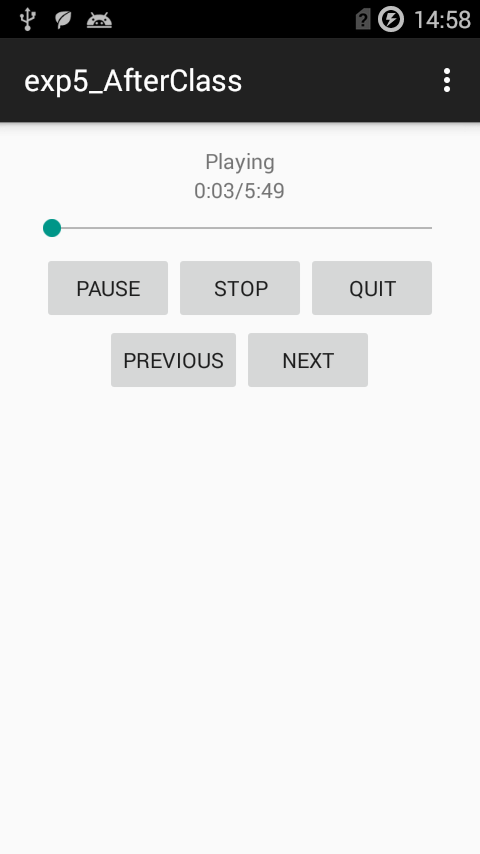
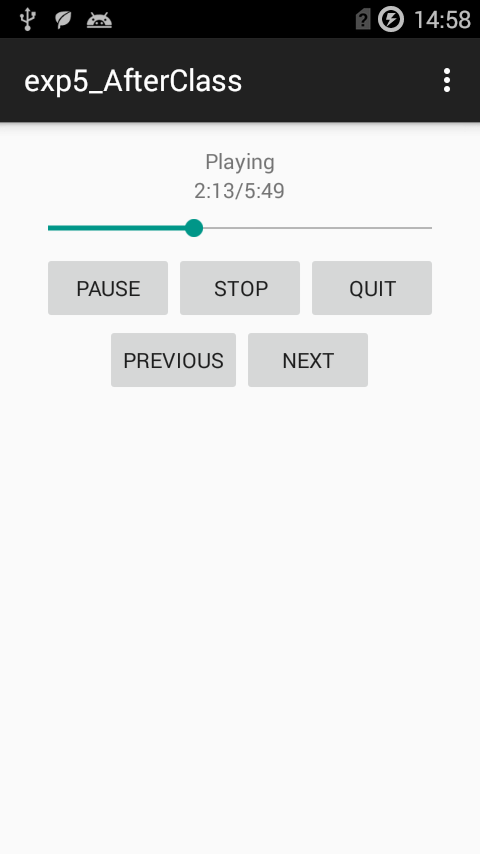
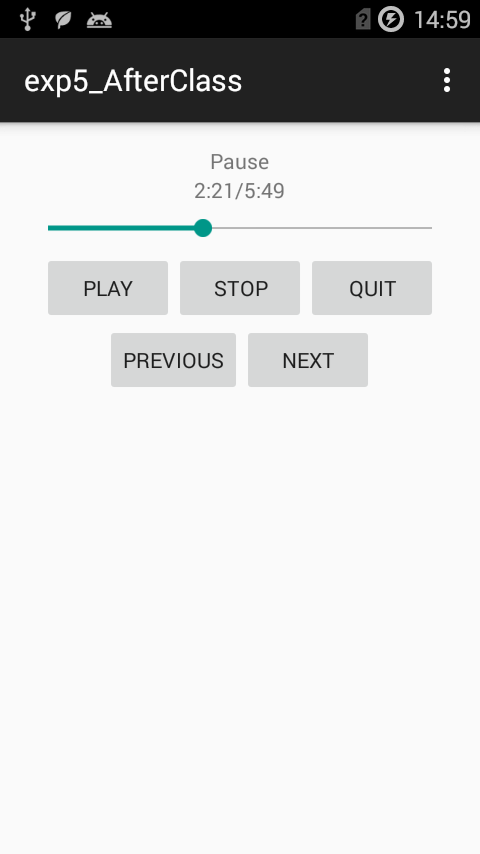
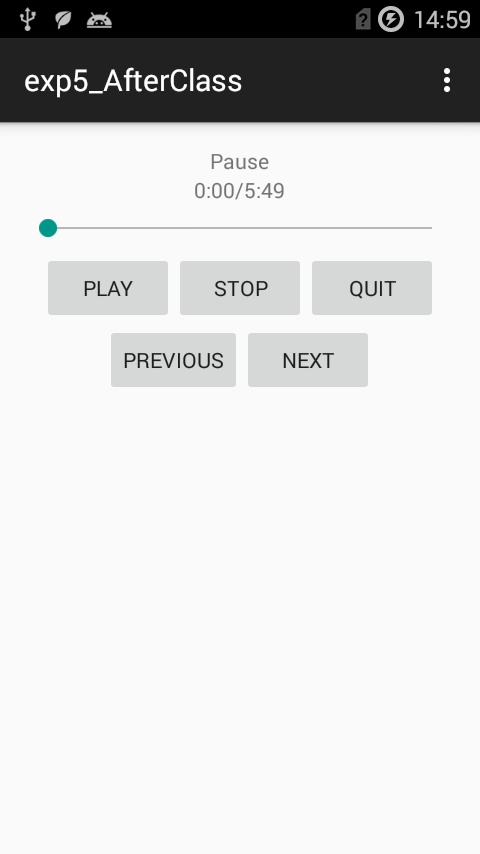
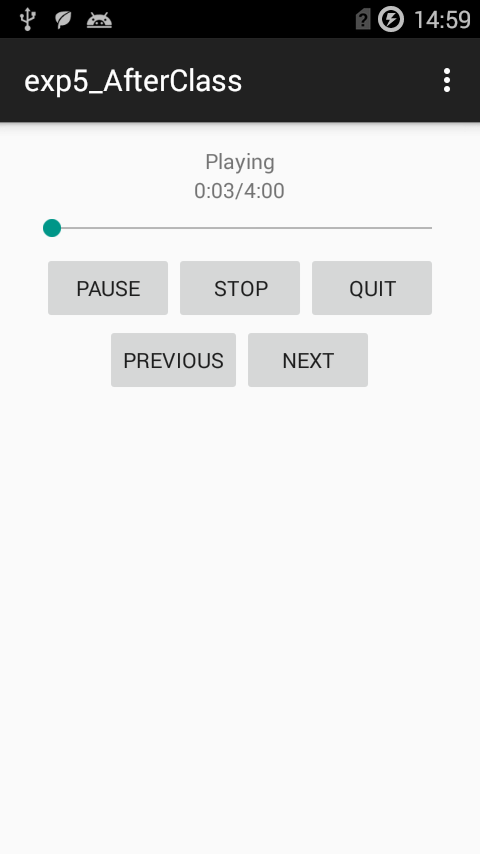
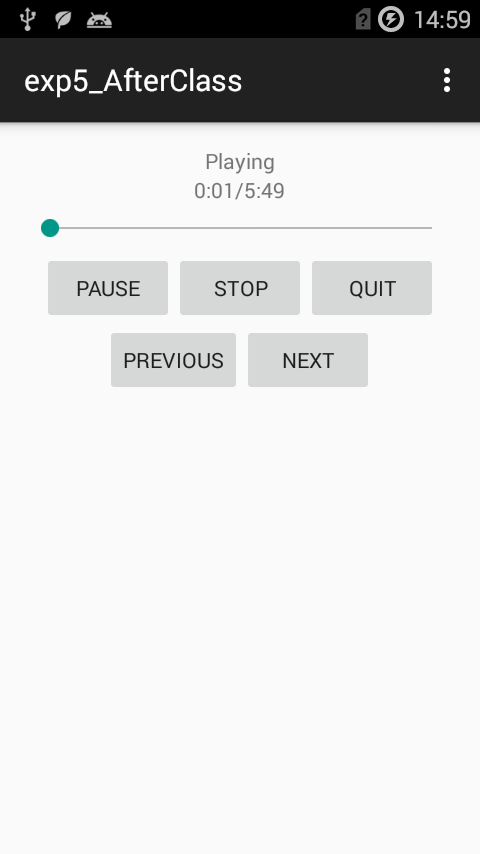
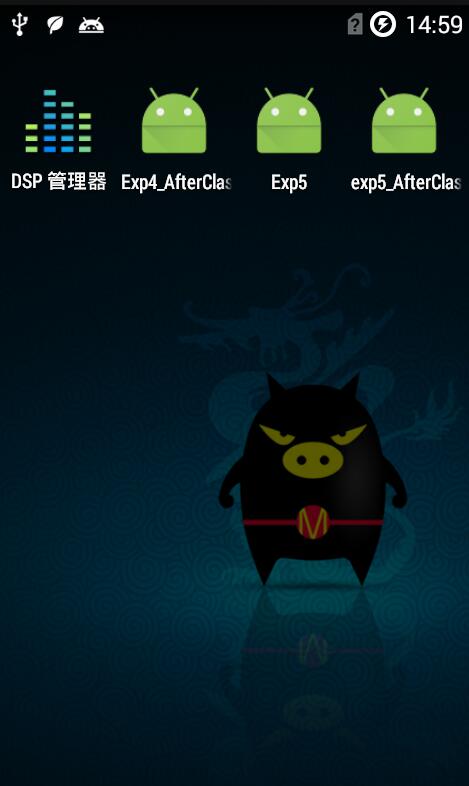
一些總結
了解Service中startService(service)和bindService(service, conn, flags)兩種模式的執行方法特點及其生命周期,還有為什么這次要一起用
startService方法是讓Service啟動,讓Service進入后臺running狀態;但是這種方法,service與用戶是不能交互的,更準確的說法是,service與用戶不能進行直接的交互。
因此需要使用bindService方法綁定Service服務,bindService返回一個binder接口實例,用戶就可以通過該實例與Service進行交互。
Service的生命周期簡單到不能再簡單了,一條流水線表達了整個生命周期。
service的活動生命周期是在onStart()之后,這個方法會處理通過startServices()方法傳遞來的Intent對象。音樂service可以通過開打intent對象來找到要播放的音樂,然后開始后臺播放。注: service停止時沒有相應的回調方法,即沒有onStop()方法,只有onDestroy()銷毀方法。
onCreate()方法和onDestroy()方法是針對所有的services,無論它們是否啟動,通過Context.startService()和Context.bindService()方法都可以訪問執行。然而,只有通過startService()方法啟動service服務時才會調用onStart()方法。
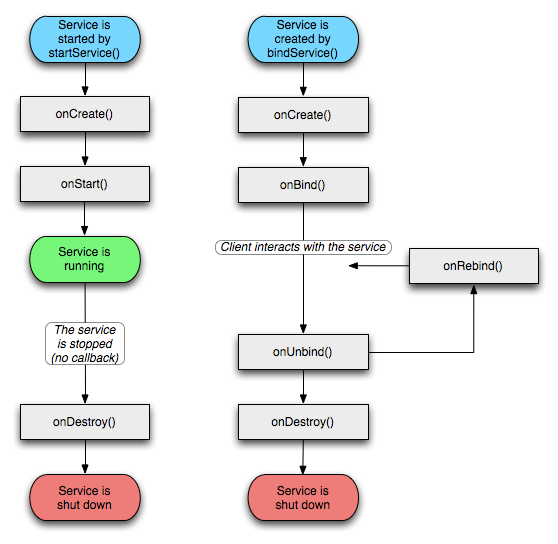
簡述如何使用Handler實時更新UI
方法一:
Handle的post方法,在post的Runable的run方法中,使用postDelay方法再次post該Runable對象,在Runable中更新UI,達到實時更新UI的目的
方法二:
多開一個線程,線程寫一個持續循環,每次進入循環內即post一次Runable,然后休眠1000ms,亦可做到實時更新UI
看完這篇關于Android如何實現簡單音樂播放器的文章,如果覺得文章內容寫得不錯的話,可以把它分享出去給更多人看到。
免責聲明:本站發布的內容(圖片、視頻和文字)以原創、轉載和分享為主,文章觀點不代表本網站立場,如果涉及侵權請聯系站長郵箱:is@yisu.com進行舉報,并提供相關證據,一經查實,將立刻刪除涉嫌侵權內容。